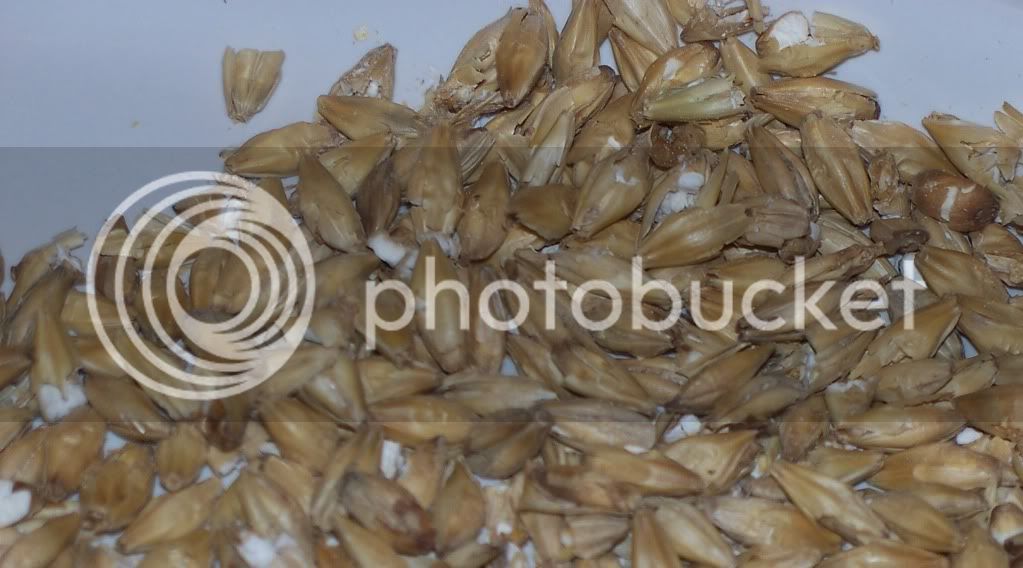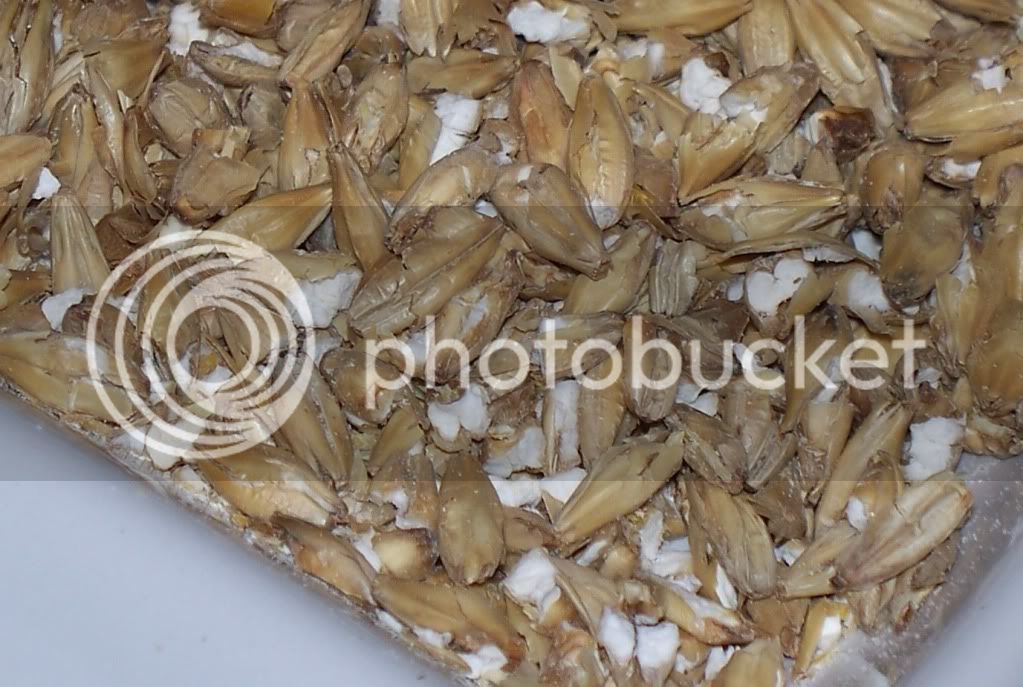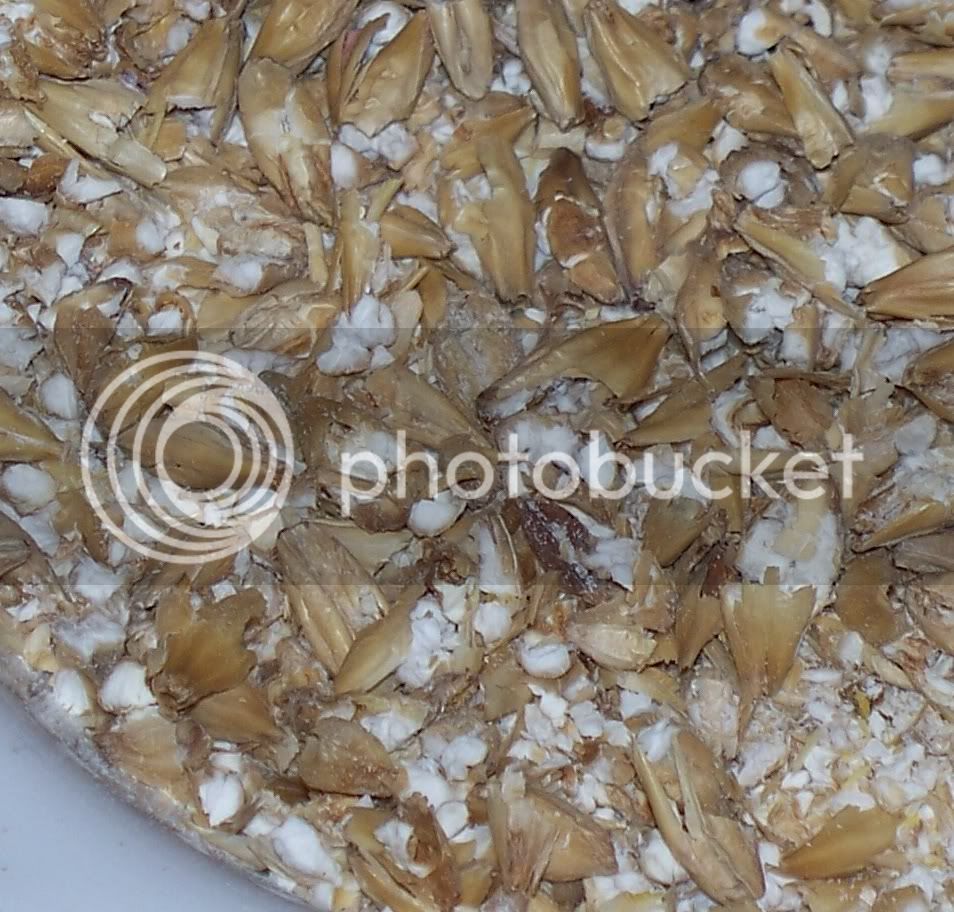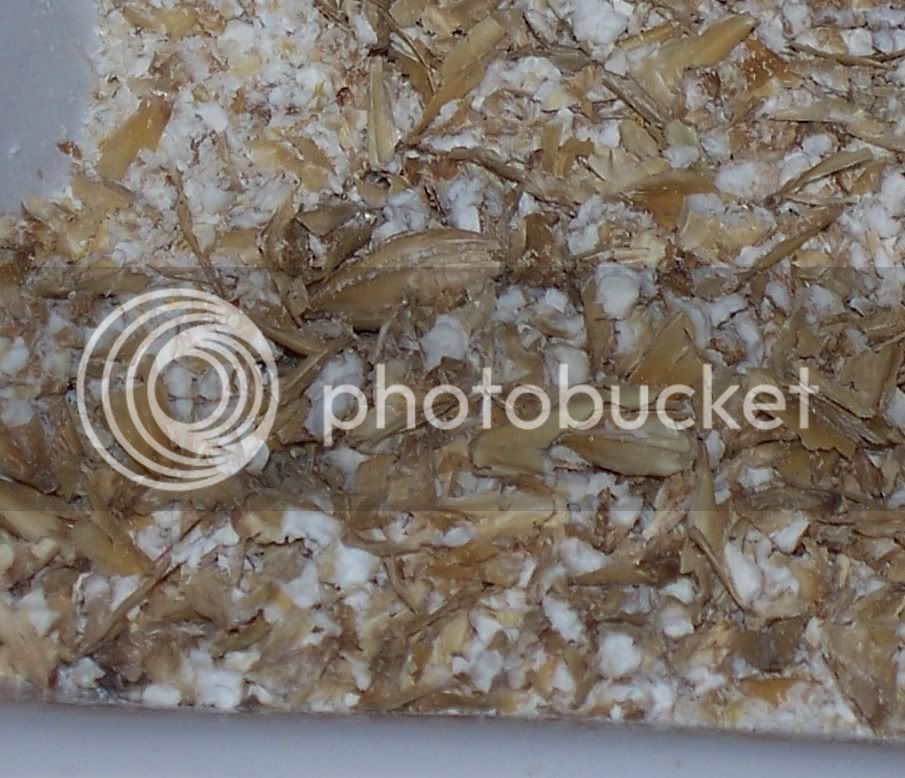mullet
Well-Known Member
I'm a recent owner of a Monster Mills MM-2, and I'm trying to figure out the crush setting.
In this picture I've crushed 4 handfuls of grain at 4 different settings. Starting at the bottom and moving counter-clockwise, the gap was as wide as I could get it, then somewhere in between twice, then as small as it can be adjusted. I don't have a set of feelers, so I was just sort of eyeballing this.

The bottom one is definitely too coarse, hardly anything cracked. The smallest gap setting is mostly flour, and most of the husks seem shredded pretty well too, which I gather could lead to a stuck sparge. Not only that, but I haven't motorized this yet, and the smallest setting is pretty hard to crank by hand.
Of the two in-between settings, I brewed this weekend on a crush that was sort of in between the two, and my efficiency was pretty low. I didn't take enough measurements to know for sure where it came from, so until next weekend I'm stuck speculating on possible reasons, and I'm guessing since I just got the mill that the crush could be partly to blame.
I'm thinking somewhere maybe between the two finest crushes in that picture would be a little better, but I'm still pretty new to this, so I thought I'd look for some advice.
I can probably get some closer up pictures if that would help, I didn't realize that uploading here would resize the image so small.
Thanks in advance!
In this picture I've crushed 4 handfuls of grain at 4 different settings. Starting at the bottom and moving counter-clockwise, the gap was as wide as I could get it, then somewhere in between twice, then as small as it can be adjusted. I don't have a set of feelers, so I was just sort of eyeballing this.

The bottom one is definitely too coarse, hardly anything cracked. The smallest gap setting is mostly flour, and most of the husks seem shredded pretty well too, which I gather could lead to a stuck sparge. Not only that, but I haven't motorized this yet, and the smallest setting is pretty hard to crank by hand.
Of the two in-between settings, I brewed this weekend on a crush that was sort of in between the two, and my efficiency was pretty low. I didn't take enough measurements to know for sure where it came from, so until next weekend I'm stuck speculating on possible reasons, and I'm guessing since I just got the mill that the crush could be partly to blame.
I'm thinking somewhere maybe between the two finest crushes in that picture would be a little better, but I'm still pretty new to this, so I thought I'd look for some advice.
I can probably get some closer up pictures if that would help, I didn't realize that uploading here would resize the image so small.
Thanks in advance!








